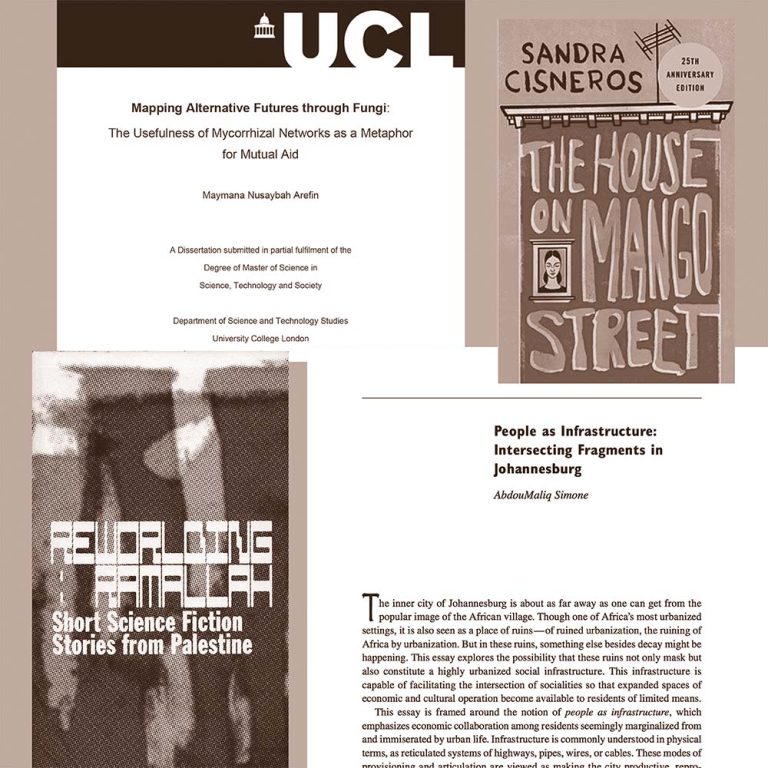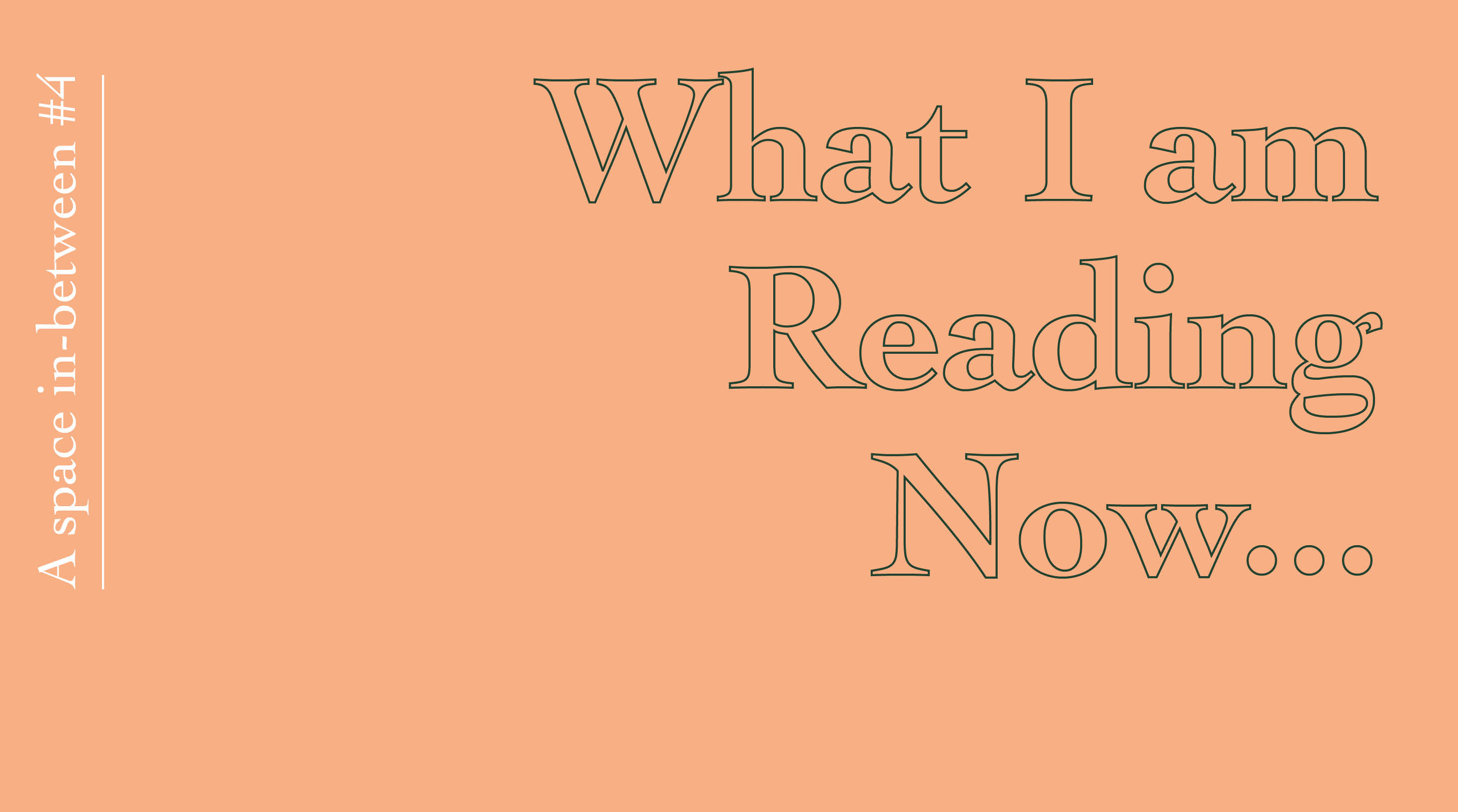What I am Reading Now…
Harun Morrison
September 2022
“There were sunflowers big as flowers on Mars and thick cockscombs bleeding the deep red fringe of theatre curtains. There were dizzy bees and bow-tied fruit flies turning somersaults and humming in the air. Sweet sweet peach trees. Thorn roses and thistle and pears. Weeds like so many squinty-eyed stars and brush that made your ankles itch and itch until you washed with soap and water. There were big green apples hard as knees. And everywhere the sleepy smell of rotting wood, damp earth and dusty hollyhocks thick and perfumy like the blue-blond hair of the dead.”
The House on Mango Street (1984), Sandra Cisneros. Excerpt contributed by Risa Horn.
🌱
In 2020 I was commissioned to design and develop a garden for Bootle Library in Merseyside, owned by Sefton Council. How to conceptually connect this communal green space to a library? My bridge was fictional gardens in literature. I wrote to librarians across the borough asking them to share their stand-out gardens in novels, poetry and so on. I circulated this request among friends to gradually build a database. To date authors of the excerpts include Mena Kasmiri Abdullah, Isabel Allende, Italo Calvino and Raafat Majzoub. Rather than an entire book, I’ve been reading multiple passages selected by others, wandering through this taxonomy of spaces. The titles of texts and page references will label a series of purposely designed planters for the library’s garden. The intention being to grow the plants referenced in a given excerpt in a specific planter.
🌱
“The SBD [1] was located in Larsa; a garden of poppies and hundreds of almond trees. While walking there, one could hear the soft sounds of nature and see hundreds of black butterflies with orange dots dancing around the SBD, serving as the device’s guardians. The town of Beit Shams believed this place came from an ancient dream. In the garden of the seven human-sized pyramids, each was carved by a unique individual.” [1] SBD, The Sun Beam Decoder. Excerpt from the short story Beit Shams, by Qusai Al-Saify.
🌱
This fictional garden (now in my database) is a bridge to another read,Reworlding: Ramallah – Short Science Fiction Stories from Palestine (2019). Edited by Callum Copley. Contributors: Lama Altakruri, Shayma Nader, Adele Jarrar, Quasi Al-Saify, Shada Mustafa, Hiba Isleem, Jameela Ewais and Fakhry Al-Serdawi. It is published by Disarming Design from Palestine, ‘an independent non-profit platform performing as a design label’. The stories were the outcome of workshops in Birzeit, Palestine, between January and March 2019, led by the publication’s editor and designer Callum Copley. In his introduction Copley references both Afro and Indigenous Futurisms and ‘reworlding’, a term he gives to the “concerted effort of reimagining the places and space we inhabit through worldbuilding techniques”. Copley describes the neologism further: “Whilst always being adjacent to worldbuilding, reworlding is the political application of worldbuilding. . . generating a multiplicity of futures with which to affect the present positively.” My time at the V&A Dundee has similarly involved working with other writers to generate a multiplicity of histories, taking individual objects in the museum as a starting point for micro-narratives, expanding the perception of an object to imagine its affective history, the individualised circumstances its production, what it may have witnessed.
🌱
Another story from Reworlding: Ramallah, Empty Boxes by Shayma Nader, depicts the interactions between Faitha, a fortune teller and a smuggler of an invisible cloak. Smuggling is already a clandestine act, but to trade in invisibility is an understandably invaluable venture in an occupied and hyper-policed landscape. The network of smuggler/dealer, fortune-teller and client is exemplary of the urbanist AbdouMaliq Simone’s notion of “people as infrastructure, which emphasises economic collaboration among residents seemingly marginalised from and immiserated by urban life”, a quote from my third read, People as Infrastructure: Intersecting Fragments in Johannesburg (2004). Simone’s essay takes Johannesburg as its case study, observing strategies employed by migrant workers often from other parts of Africa; in particular but not limited to those working outside the law through choice, bureaucracy or lack of legal protection. Simone’s text emphasises recognising infrastructure as inclusive of an improvisatory, agile constellation of human relationships, not solely tangible architecture and material networks. A recommendation from Dr Ros Gray while we worked on an art-research garden in New Cross, alongside Dr Jacq Hannam, a soil scientist and participants from the Lewisham Migrant and Refugee Network.
🌱
My final text takes this notion of infrastructure to the realm of more-than-human. In Mapping Alternative Futures through Fungi: The Usefulness of Mycorrhizal Networks as a Metaphor for Mutual Aid (2021), Maymana Nusaybah Arefin (an artist and community grower), asks how fungal networks can be a model for mutual aid. Mycorrhizas are fungal associations between plant roots and beneficial fungi. The fungi effectively extend the root area of plants and in some studies operate as a para-communication system between trees, so that more vulnerable plants can be relayed resources. Arefin, quotes ecologists Van der Heijden and Horton who describes this process as analogous to an ‘underground socialism’. The urgency pulsing through Arefin’s text emerges from it being written in the midst of the Covid-19 pandemic. A period when governmental institutions were failing to distribute aid as rapidly as needed, while the less hierarchical mutual aid groups were arguably swifter and more effective.
Harun Morrison is an artist and writer based on the inland waterways. He is currently Designer and Researcher in Residence at V&A Dundee. His forthcoming novel, The Escape Artist will be published by Book Works in 2023. Since 2006, Harun has collaborated with Helen Walker as part of the collective practice They Are Here. Recent commissions include I’ll Bring You Flowers(2019); Survival Kit 10, Riga; Laughing Matter (2018) at Studio Voltaire; the performance 40 Temps, 8 Days (2017) at Tate Modern; and Beacon Garden (2018 – 2020), a commission to co-design and build a community garden in Dagenham, East London. This summer, Harun continues to develop and repair a garden for Mind Sheffield, a mental health support service, as part of the Art Catalyst research programme Emergent Ecologies and cultivate a dementia garden for a UCL’s new neurological research centre in Kings Cross. Harun is currently exhibiting Dolphin Head Mountain at the Horniman Museum in South London, co-commissioned by Delfina Foundation. From 2019 – 2022, Harun was a trustee of the Black Cultural Archive.
Harunmorrison.net
Instagram @Harunishere
Reading
The House on Mango Street, Sandra Cisneros (Arte Público Press, 1984)
Reworlding: Ramallah – Short Science Fiction Stories from Palestine. Edited by Callum Copley (Onomatopee, 2019)
Cited stories:
– Beit Shams, Qusai Al-Saify in Reworlding: Ramallah
– Empty Boxes, Shayma Nader in Reworlding: Ramallah
People as Infrastructure: Intersecting Fragments in Johannesburg, AbdouMaliq Simone (Public Culture (2004) 16 (3): 407–429, Duke University Press, 2004)
Mapping Alternative Futures through Fungi: The Usefulness of Mycorrhizal Networks as a Metaphor for Mutual Aid, Maymana Arefin, (Thesis for: Science, Technology and Society MSc, University College London, 2021)

Please note the views published in What I am Reading Now… are personal reflections of the contributors.
These may not necessarily represent the views of the University of Dundee.
———
Previous Issue: Rae-Yen Song, August 2022
Next Issue: Awuor Onyango, October 2022
